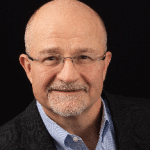It’s hard to say this without sounding like I’m bragging, but that’s not going to stop me: I’m going to the White House tomorrow to talk about Pew Internet Project’s latest research on peer-to-peer healthcare.
The White House Office of National AIDS Policy is convening a meeting, in partnership with the Department of Health and Human Services’ Office on Women’s Health and the White House Council on Women and Girls, in recognition of National Women and Girls HIV/AIDS Awareness Day. The event will be live-streamed at http://www.whitehouse.gov/live beginning at 3pm Eastern.
Here are my talking points:
- Nine in ten teenagers go online. Eight in ten teenagers between 14-17 years old have a cell phone. Eight in ten online teens between 14-17 years old use social networking sites. The numbers are lower among adults, but not by much. Internet and social network use only drop down significantly around age 65. The internet gives us access not only to information, but also to each other.
- Eight in ten internet users age 18+ gather health information online. 17% of cell phone users have used their phone to look up health or medical information. According to Yahoo’s data, three out of the five most popular health searches on cell phones have to do with sex. The mobile internet is a just-in-time, wherever-you-are health information resource.
- Mobile, social technology is changing our frame of reference so that we see information as portable, personalized, and participatory.
- None of the organizations or individuals in this room can control the conversation about HIV, but they can contribute to it.
- Pew Internet’s research shows that a majority of internet users still turn to a health professional with their health questions, but 1 in 5 internet users look online for “someone like them” to provide advice. That number is higher among people living with a chronic disease and among those who have experienced a significant health change in the past year.
- There is a parallel health system online, powered by people connecting with each other, and now is the time to tap into it.
- Take this opportunity to regroup. Tap in to people’s instincts to share and their ability to do so. Seed the conversation with what you know. Let your audience become your agents.
- Trends in Teen Communication and Social Media Use, a presentation by my colleague Kristen Purcell
- Health Topics report
- Mobile Health 2010 report
- Going Viral Against HIV and STIs, a round-up of insights from another HIV-awareness event
As always, thoughts welcome!






I would try to make a case for the power of social media achieving these two goals from Healthy People 2010:
1) Increasing the proportion of high school students that graduate as a virgin (goal 25-11a)
2) Increasing the proportion of high school students who cease being sexually active (25-11b)
see http://www.womenshealth.gov/pub/healthy-people/responsible-sexual-behavior.cfm
Good luck, by the way, and congratulations!
That would be an example of something another speaker might advocate, not me, but thanks for the comment. I’ll take notes on what the experts say on the other panels and report back.
I’m there to talk about how women and girls use social tools to check out what other people are doing (behavioral norms) and how they gather information. Again, I’m playing the role of geologist, not architect; observer, not advocate.
I would be very interested to see these same internet usage stats as they relate to Medicaid eligibles. We have a very hard time communicating with adolescents for annual preventative care, and while we talk about using social media, we have no stats to consider. This is a great presentation from Dr. Purcell, but also includes statements that seem to indicate the trends don’t reflect low-income members of society (slide 5 in particular). Wonder what your thoughts would be on the feasibility of such a study, or perhaps one that exists already?
Thanks for the question. I’ll pose it to my colleagues who focus on teens, but in the meantime I invite you to explore this section of our site:
http://www.pewinternet.org/topics/Teens.aspx
We post all of our reports, presentations, and survey data so that anyone can search or download it for their own use – for free.
Hi all,
I will write a separate post about the meeting when the videos go up, but I’m pasting the agenda below so you can see who spoke.
One notable aspect was the inclusion of women living with HIV on 2 of the 3 panels, along with health professionals and community organizers who work in direct service to people living with HIV/AIDS in New York, Chicago, Houston, and Washington, DC. It made for a potent mix of straight talk from the perspectives of patients, medical experts, advocates, and policymakers.
Opening remarks
Jeffrey S. Crowley (Office of National AIDS Policy)
What Can YOU Do: Take Action
Congresswoman Donna Christensen (U.S. Virgin Islands)
Framing the Discussion: Epidemiological Overview
Gina Brown (Office of AIDS Research, NIH)
Panel 1 Discussion: Taking Action Against HIV/AIDS: Effective Strategies for Prevention
Moderator: Janet Cleveland (Division of HIV/AIDS Prevention, CDC)
Panelists: A. Toni Young (Community Education Group)
Cristina Pena (Elizabeth Glaser Pediatric AIDS Foundation)
Barbara Joseph (Positive Efforts, Inc.)
Panel 2 Discussion: Getting the Help You Need: Access to Care
Moderator: Frances Ashe-Goins (Office of Women’s Health, HHS)
Panelists: Mardge Cohen (Rush University)
Heather Hauck (Maryland Department of Health and Mental Hygiene)
Hadiyah Charles (Suffolk University)
Panel 3 Discussion: What Can YOU Do – Take Action?: Social Marketing and Messaging Techniques
Moderator: Mark Ishaug (AIDS United)
Panelists: Regan Hofmann (POZ Magazine)
Susannah Fox (Pew Research Center)
Cheryl Smith (AIDS Institute, New York State Department of Health)
Closing Remarks
Tina Tchen (Office of the First Lady)
Video is up, embedded here:
http://www.pewinternet.org/Presentations/2011/Mar/National-Women–Girls-HIVAIDS-Awareness-Day.aspx
If you want a brush-up on epidemiology and female anatomy, skip ahead to minute 22 when Gina Brown of the NIH speaks. It was a frank, clinical, and yet entertaining discussion of the facts.